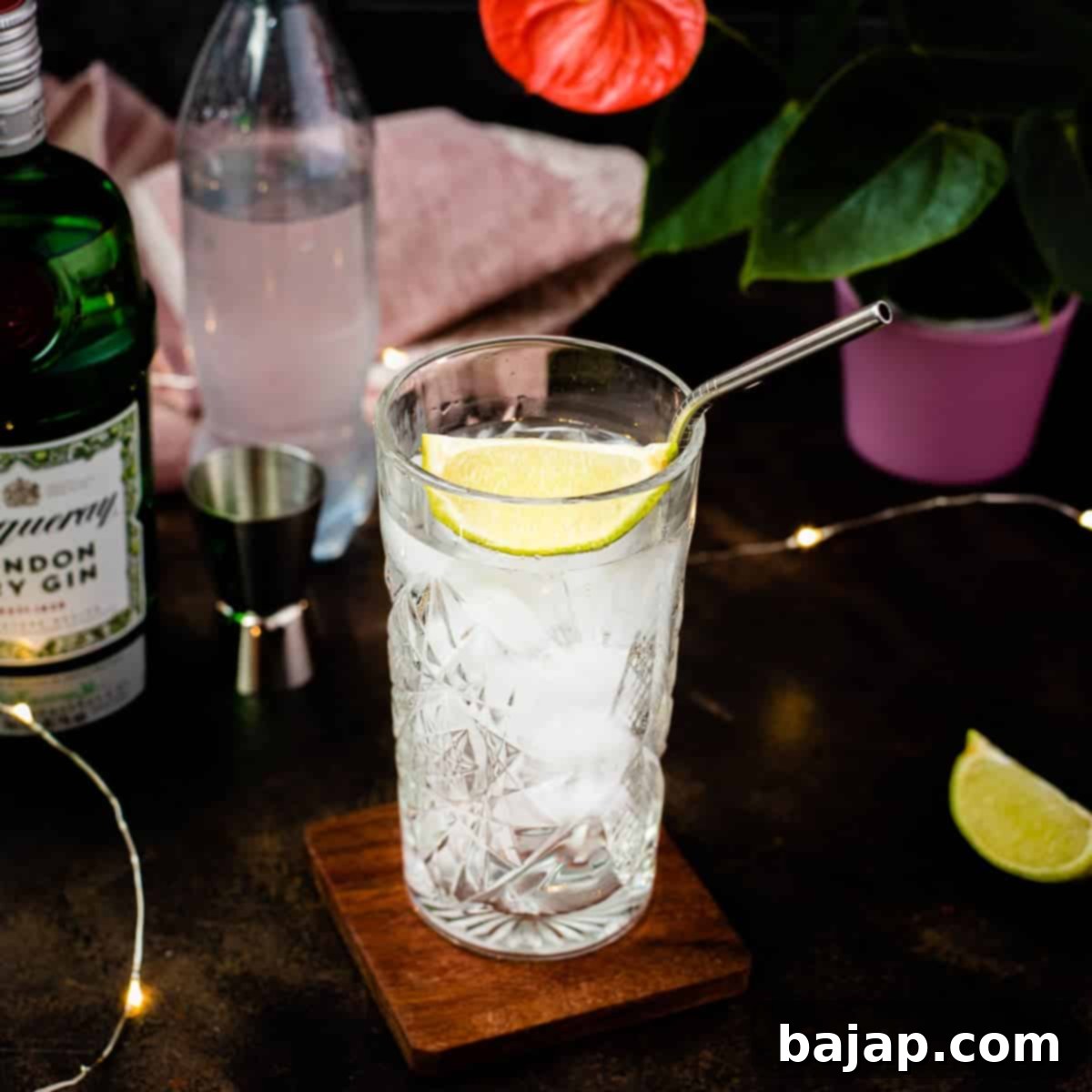The Ultimate Guide to Gin and Tonic: History, Types, & Crafting the Perfect G&T
There’s truly nothing quite like the refreshing, crisp **gin and tonic** on a hot summer’s day. This beloved cocktail remains a popular choice around the world, known for its versatile nature and perfectly balanced flavors. If you’ve never had the pleasure of sipping this iconic beverage, or if you’re a seasoned G&T enthusiast looking to deepen your appreciation, this comprehensive guide will tell you everything you need to know about crafting and enjoying the perfect **gin and tonic**.
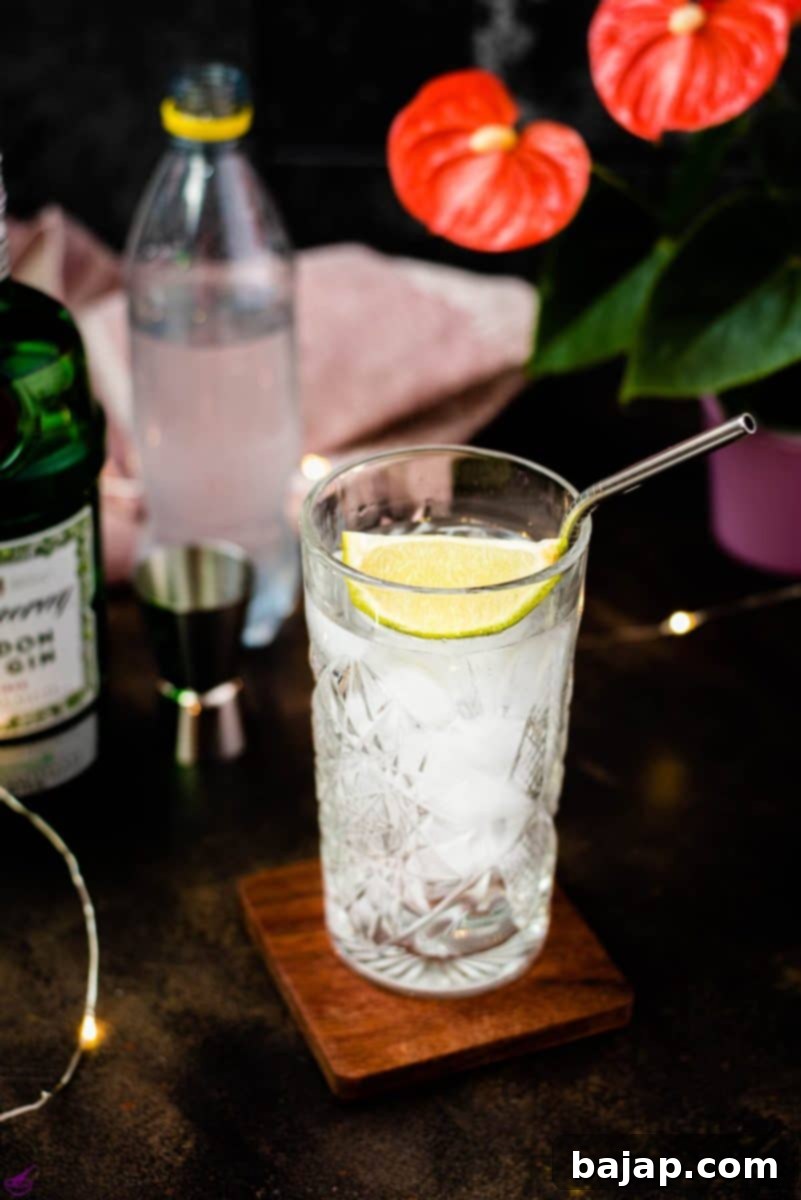
Whether you’ve been enjoying **gin and tonics** for years or have only recently discovered their allure, there’s a fascinating world of history, styles, and flavors to explore within this simple yet sophisticated drink.
National Gin and Tonic Day is on April 9th!
A Brief History of Gin & Tonic
Before it became the refreshing cocktail we know and love, **gin** had humble beginnings rooted in medicine. The true precursor to modern **gin** was “jenever,” a juniper-infused spirit first distilled by 13th-century Dutch monks. Initially believed to cure ailments, including the plague, this early spirit laid the foundation for what would become a global phenomenon.
The spirit’s popularity truly took off in the 17th century during the Eighty Years’ War for Dutch independence. Soldiers, including British allies, adopted the practice of taking a shot of jenever for what became known as “Dutch Courage” before heading into battle. The British soldiers quickly developed a taste for this potent spirit and brought it back home, introducing it to England.
In Britain, **gin** became incredibly popular, especially in London, due to its ease of distillation and affordability compared to beer. This period, known as the “London Gin Craze” (lasting nearly a century), had significant societal impacts, often blamed for widespread social problems, crime, and public health issues.
By the 18th century, **gin** once again found itself serving a medicinal purpose. British sailors on long sea voyages faced the constant threat of scurvy due to vitamin C deficiency. To combat this, they began mixing their daily **gin** ration with lime, a practice that eventually led to the creation of the popular Gimlet cocktail.
It was during this same era that **tonic water** entered the picture. Its origins trace back to South America, where the bark of the cinchona tree was discovered to possess anti-malarial properties. The powdered bark, known as quinine, was initially mixed with water and sugar to make it more palatable. However, it wasn’t until the invention of carbonated water that **tonic water** transitioned from a medicinal remedy to an everyday drink.
The iconic duo of **gin and tonic** was first paired together by British soldiers stationed in India. Seeking an added kick to their anti-malarial quinine, they mixed it with **gin**, thus creating the legendary cocktail. The rest, as they say, is history!
Variations of this classic cocktail gained widespread popularity in the United States during the Prohibition Era. “Bathtub **Gin**,” often homemade and of questionable quality, was frequently mixed with citrus flavors like lime, orange, and lemon to mask its harsh taste, further solidifying the citrus-gin connection.
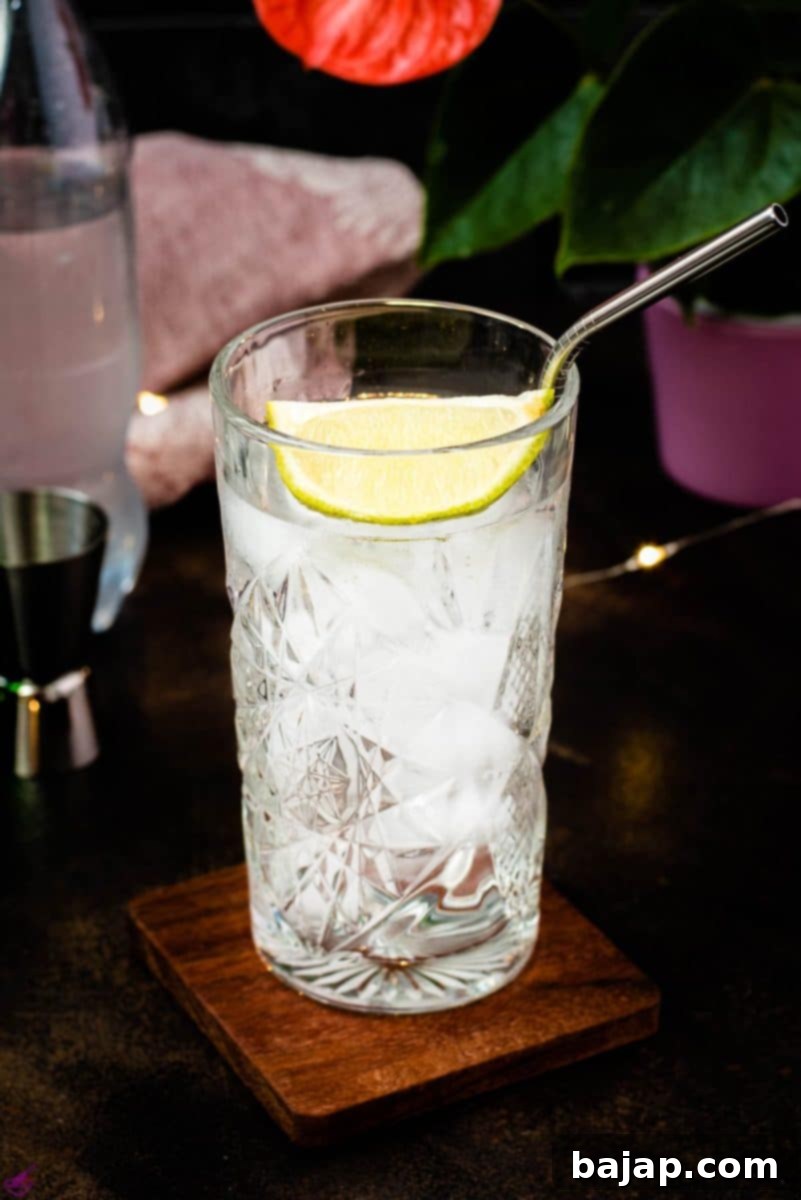
Different Types of Gin
At its core, all **gins** are flavored with juniper berries and various other botanicals. However, the world of **gin** is far more diverse than many realize, with four main categories that offer distinct taste profiles, production methods, and price points. While most people immediately think of London Dry – by far the most popular type of **gin** – there are also Old Tom, Plymouth, and the more modern Contemporary/New Western/New American styles. Understanding these differences is key to finding your perfect **gin** for a truly exceptional **gin and tonic**.
London Dry Gin
If you’re familiar with popular brands like Bombay Sapphire, Tanqueray, and Beefeater, then you’re already acquainted with London Dry Gins. Despite the name, these **gins** don’t necessarily need to be produced in London; rather, the “London Dry” designation refers to a specific distillation method. These **gins** are distilled in a traditional still, and after distillation, no artificial flavorings or sweeteners are permitted – only a small amount of water may be added to bring it to bottling strength. This adherence to a pure distillation process ensures a consistent and high-quality product.
The rise of London Dry was a response to the notorious “Gin Craze” of the 18th century, where poorly distilled and often dangerous **gins** were rampant. In the 19th century, a movement among London distillers led to improved methods and regulations, giving birth to the refined London Dry style. These **gins** are renowned for their clean, crisp, and robust pine-forward taste, with pronounced notes of juniper taking center stage.
Bombay Sapphire Gin
This iconic blue bottle is instantly recognizable in any home bar or restaurant. Bombay Sapphire is cherished for its distinctly sweet-taste flavor profile and its incredibly smooth, crisp finish. Its botanicals are vapor-infused, contributing to its refined character.
Typically $20 USD
Tanqueray Gin
Another popular brand of London Dry **gin**, Tanqueray is celebrated for its distinctive juniper-forward flavor, beautifully complemented by subtle hints of lemon zest. If you choose Tanqueray for your **gin and tonic**, I highly recommend adding a fresh lemon twist to help accentuate those delicious, bright citrus notes and create a more aromatic experience.
Typically $25 USD
Beefeater London Dry Gin
While the “London Dry” style doesn’t mandate production in London, Beefeater remains proudly distilled in Kennington, upholding a recipe that has changed very little over the past 200 years. It’s renowned for its impeccably clean and crisp taste, featuring prominent juniper notes intertwined with vibrant citrus elements.
Typically $20 USD
Old Tom Gin
Old Tom **gin** was the undisputed king in 18th-century England, a sweeter style that bridged the gap between malty Dutch jenever and the lighter London Dry. Its immense popularity waned significantly over the subsequent two centuries, almost fading into obscurity. However, with the advent of the modern craft cocktail movement, Old Tom **gin** has experienced a delightful resurgence, much to the delight of mixologists and enthusiasts.
Intriguingly, the exact origin of the name “Old Tom” remains a subject of historical debate, as does its precise production method. Some distillers choose to age it, while others do not. Similarly, some add a touch of sugar for sweetness, while others forgo any additional sugars. Today, Old Tom **gin** comes in a variety of flavors and even colors, but its defining characteristic remains its slightly sweeter profile compared to its London Dry counterpart, making it perfect for classic cocktails like the Tom Collins.
Hayman’s Old Tom Gin
While Old Tom **gins** are generally known for their sweetness, Hayman’s offers a wonderfully balanced profile. Its top notes present a peppery warmth, beautifully underpinned by strong juniper and citrus notes, culminating in a smooth and harmonious finish.
Typically $25 USD
Hammer & Son Old English Gin
For those seeking a delightful interplay of sharp and sweet, Hammer & Son Old English **Gin** is an excellent choice. It’s prominently juniper-forward, with robust citrus notes that provide a refreshing brightness, making it a fantastic base for a flavorful **gin and tonic**.
Typically $25 USD
Plymouth Gin
Plymouth **gin** holds a unique position in the **gin** landscape as both a distinct style and a specific brand. For over 230 years, this particular style of **gin** has been exclusively produced at the historic Black Friars Distillery in Plymouth, England. The distillery is celebrated for crafting **gins** that are notably more earthy and piney in taste compared to the drier London Dry varieties. Its unique soft, citrusy profile with a full-bodied texture is attributed to the soft Dartmoor water used and a different botanical blend, featuring more root botanicals.
Plymouth Gin
If you appreciate earthy undertones and a more subtle juniper presence, Plymouth **Gin** will surely captivate your palate. It offers distinct piney notes, a touch of zest, and an intricate blend of juniper and cardamom, along with other botanicals that contribute to Plymouth **Gin**’s unique and historically rich recipe. It’s often recommended for classic cocktails where its rounded profile can shine without overpowering other ingredients.
Typically $35 USD
Contemporary/New Western/New American Gin
For those looking for a modern twist on the classic London Dry style, Contemporary **gins** – also known as New Western or New American **gins** – offer an exciting alternative. These innovative **gins** tend to shift the spotlight, placing a greater emphasis on floral and citrus flavors, often treating them with the same importance as the traditional juniper essential to all **gins**. This results in a broader, more adventurous flavor spectrum that appeals to a new generation of **gin** drinkers.
Bluecoat American Dry Gin
Right from the first sip, you’ll appreciate Bluecoat **gin**’s wonderfully sweet aromatics and soft, earthy juniper notes. It delivers a smooth and complex experience, culminating in a bright and clean finish that makes it a standout in the New American **gin** category.
Typically $25 USD
Aviation Gin
While many might be familiar with Aviation **Gin** thanks to its celebrity co-owner, Ryan Reynolds, it’s absolutely worth exploring for its exceptional quality and unique botanical blend. Aviation **Gin** is crafted from a delicious infusion of cardamom, coriander, French lavender, anise seed, sarsaparilla, juniper, and two distinct kinds of orange peel, resulting in a beautifully complex and aromatic **gin** that challenges traditional expectations.
Typically $40 USD
St. George Botanivore Gin
This exquisite **gin** achieves a delicious balance of tangy citrus, bright hops, fresh herbs, and exotic spices. It is frequently described as both complex and bright, managing to retain classic touches reminiscent of standard **gins** while still offering a truly unique and memorable drinking experience, perfect for those who appreciate nuanced flavors in their **gin and tonic**.
Typically $30 USD
Different Types of Tonic Water
While **gin** gets much of the attention, the choice of **tonic water** is equally crucial to a perfect **gin and tonic**. The right tonic can elevate your G&T, complementing the botanicals of your chosen gin and adding its own unique character. From classic, affordable options to premium craft varieties, here are some popular **tonic waters** to consider for your next cocktail:
Schweppes Tonic Water
If you’re seeking a widely available and affordable option for your **tonic water**, Schweppes is an excellent choice. Founded in 1783, it boasts the title of the world’s first soft drink, carrying a rich history in every bubble. It’s a reliable staple that delivers classic **tonic water** flavor without breaking the bank, making it a go-to for many G&T enthusiasts.
Typically $1.50 USD per Liter
Canada Dry Tonic Water
If you’re looking for a **tonic water** that’s not only a great mixer but also delicious enough to enjoy on its own, Canada Dry is an excellent recommendation. Its balanced flavor profile makes it a refreshing drink by itself, and as many can attest, the quinine in tonic water is often praised for its ability to help settle an upset stomach.
Typically $2.50 USD per Liter
Top Note Classic Tonic Water
For those who desire a touch of sophistication and appreciate craft beverages, allow me to suggest Top Note Classic **Tonic Water**. This relatively new artisan option is meticulously crafted from all-natural quinine bitters, distinguished by bright top notes of fresh lime zest. It’s designed to elevate any **gin and tonic** with its nuanced and premium flavor profile.
Typically $30 USD for a 16-Pack
Fever-Tree Refreshingly Light Premium Indian Tonic Water
Fever-Tree Refreshingly Light Premium Indian **Tonic Water** is a popular and trendy option among **gin and tonic** aficionados, offering a premium experience. While it falls into a higher price bracket compared to Canada Dry and Schweppes, its superior quality and carefully selected natural ingredients make it a worthwhile indulgence. It’s celebrated for being delicious, light, and incredibly refreshing, allowing the botanicals of your **gin** to truly shine.
Typically $34 USD for a 24-Pack
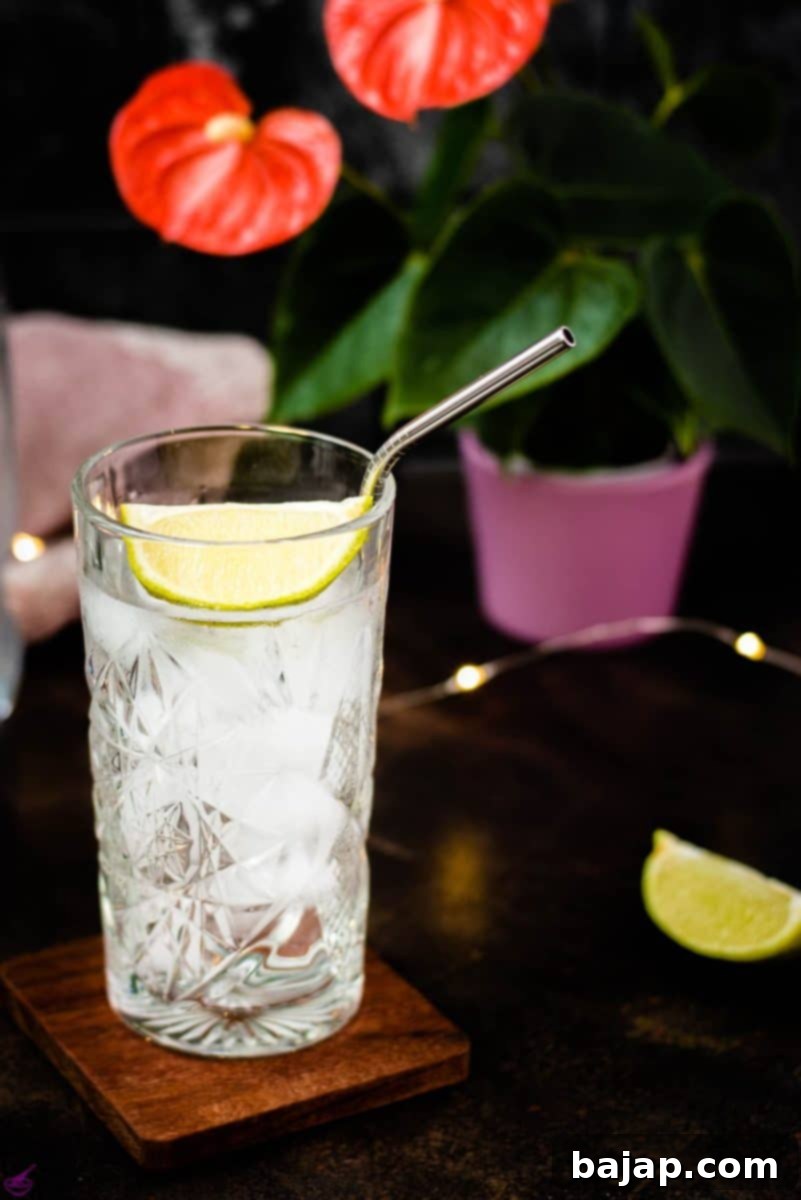
Best Pairing for Gin and Tonic
One of the most delightful aspects of the **gin and tonic** is its incredible versatility, making it easy to pair with a wide array of flavors, both within the glass and alongside a meal. Whether you’re enhancing the cocktail itself or planning a menu for guests, there are numerous ways to add a creative twist to this classic.
For in-glass variations, popular garnishes extend beyond the traditional lime wedge to include vibrant lemon peels or fragrant orange peels, often accompanied by their freshly squeezed juices for an extra burst of flavor. Beyond citrus, you might encounter more adventurous options such as cherry tonic, grapefruit tonic, or even refreshing watermelon tonic, each offering a unique dimension to your **gin and tonic** experience.
If you’re hosting and looking for the perfect culinary companions to serve alongside a **gin and tonic** for your guests, you’ll find a wealth of options:
- Cheeses and Berries: These are both fantastic pairing options. Imagine a beautifully arranged charcuterie board featuring a selection of artisanal cheeses and seasonal berries – it would be absolutely perfect for guests enjoying a refreshing **gin and tonic** upon arrival. The tang of berries and richness of cheese beautifully complement the botanicals of gin.
- Chocolates and Fudge: If you’re planning to serve after-dinner drinks, rich chocolates and decadent fudge offer a delightful contrast and compliment. The sweetness and deep flavors of these treats harmoniously balance the bitter notes and intricate botanical flavors of a classic **gin and tonic**.
- Pâté: For those who enjoy serving something a bit more unexpected yet wonderfully sophisticated, I highly recommend trying a pâté. Interestingly, many pâtés are seasoned with juniper, the primary botanical ingredient at play in **gin**. This creates a natural and intriguing flavor synergy that is sure to impress.
Gin and Tonic Ratio
Achieving the perfect **gin and tonic ratio** is crucial for a balanced and enjoyable cocktail. To ensure your G&T is just right, start by filling your highball glass generously with ice cubes. Then, pour in 1 ½ oz (4cl or 40 ml) of your chosen **gin**. After adding your spirit, carefully fill the remainder of the glass with **tonic water**. The key is to use a highball glass, as its tall, slender shape is specifically designed to accommodate this ratio, preventing the delicate balance of **gin** to **tonic** from getting out of whack and ensuring optimal refreshment. While this is a standard starting point, feel free to adjust slightly to suit your personal taste preferences.
Best Glass for Gin and Tonic – Highball
The highball glass is the quintessential vessel for many mixed drinks, and it is particularly ideal for **gin and tonics**. Its tall, thin design isn’t just aesthetically pleasing; it actually serves a functional purpose by helping to preserve the effervescence, or bubbles, in your carbonated **tonic water** for a longer period. This means your **gin and tonic** stays crisp and lively from the first sip to the last, ensuring a consistently refreshing experience. The generous size also allows ample room for ice, which is critical for chilling and proper dilution of your cocktail.
🥘 Ingredients and Garnish for a Tanqueray Gin and Tonic
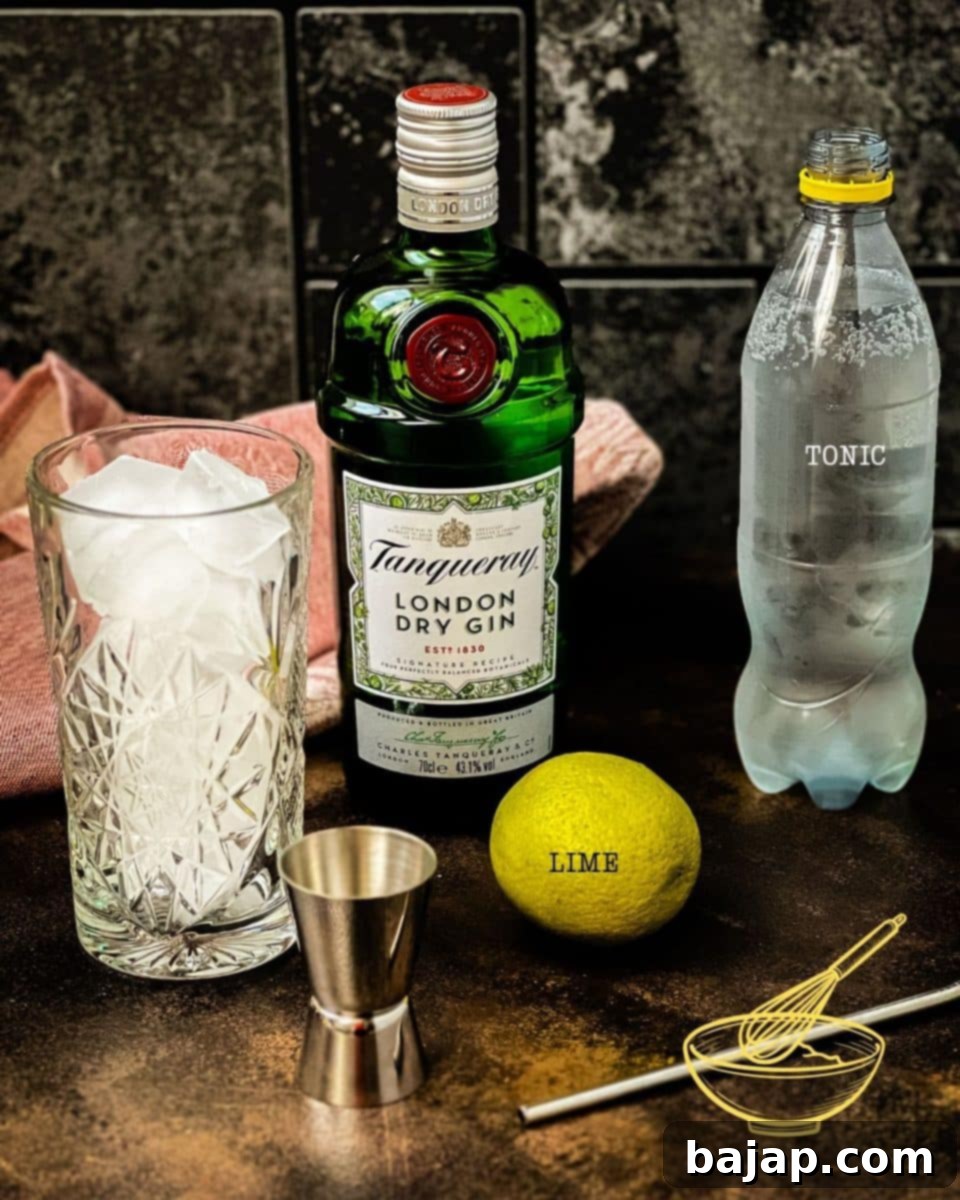
- Ice Cubes – to fill up the highball glass
- Tanqueray Gin – 1 ½ oz // 4cl // 40ml
- Tonic Water – To fill up the glass
- Lime wedge or lemon twist – for garnish
See the recipe card below for quantities and full instructions.
🔪 How to Make a Tanqueray Gin and Tonic
Crafting a delicious Tanqueray **Gin and Tonic** is simple and quick. For the best result, I recommend starting with a chilled highball glass, ensuring your drink stays cold and crisp. Fill the glass to the brim with ice cubes, as proper chilling is essential for minimizing dilution and maximizing enjoyment.
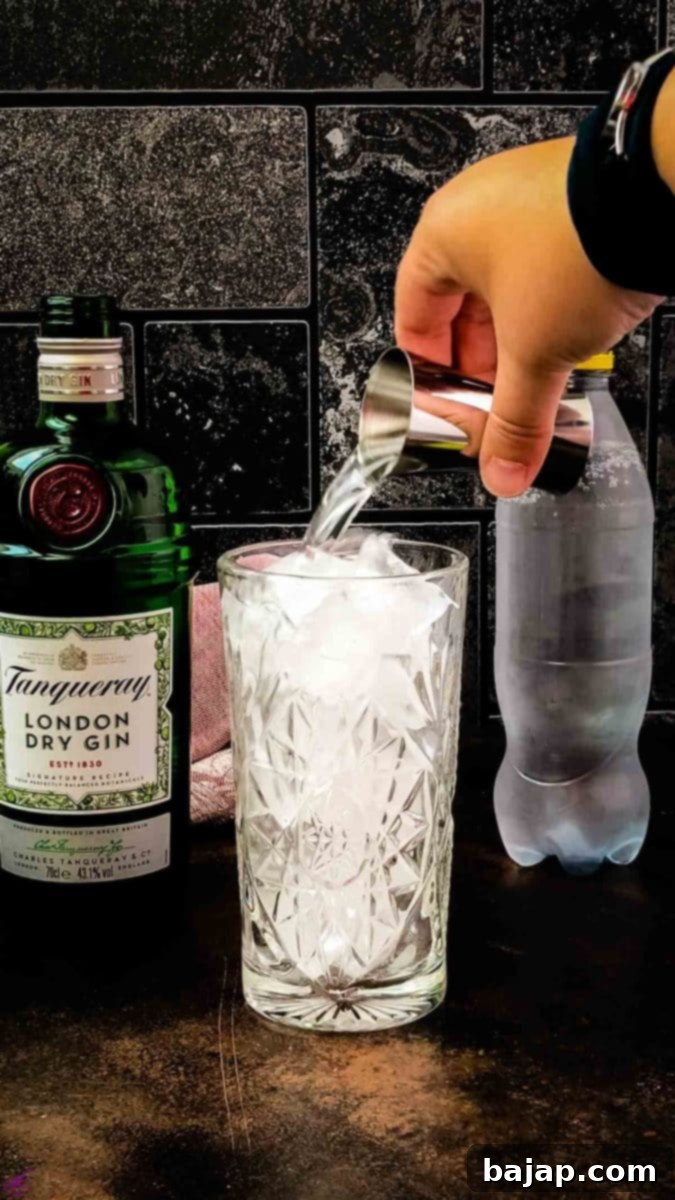
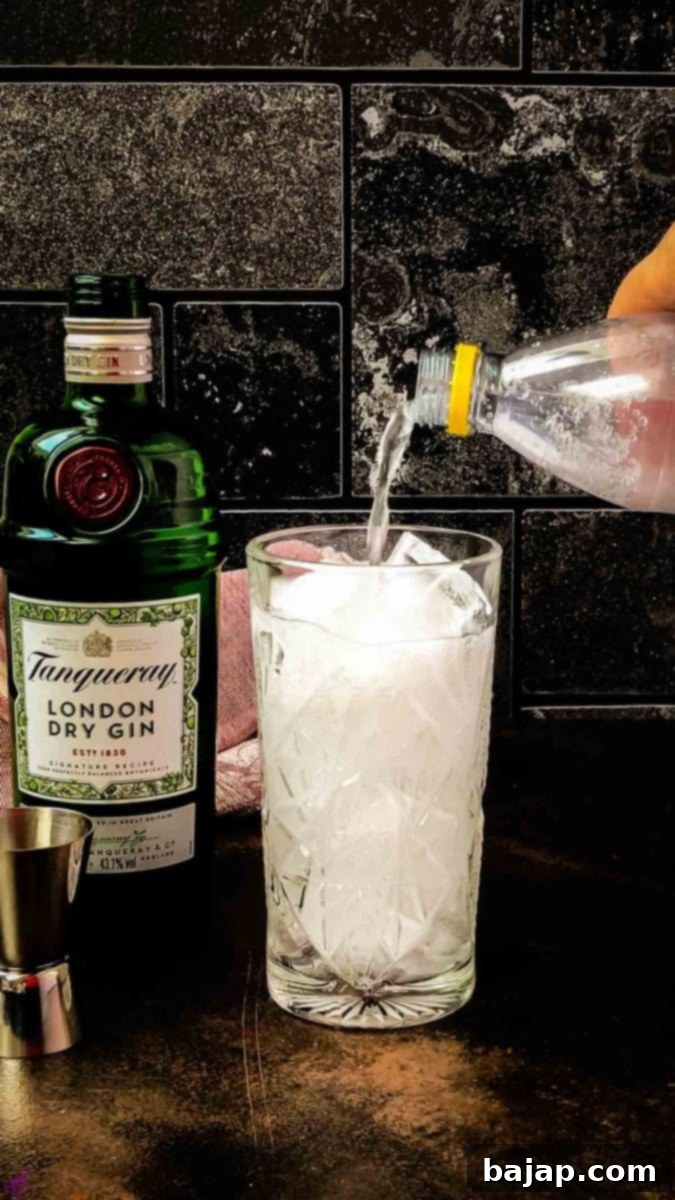
Next, pour in 1 ½ oz (4cl or 40 ml) of your Tanqueray **Gin**. Once the spirit is in, gently fill the rest of the glass with your preferred **tonic water**. A typical highball glass will usually hold anywhere from 240 to 350 ml of liquid, ensuring a good proportion of tonic to gin with plenty of ice. Garnish with a fresh lime wedge or lemon twist, and enjoy!
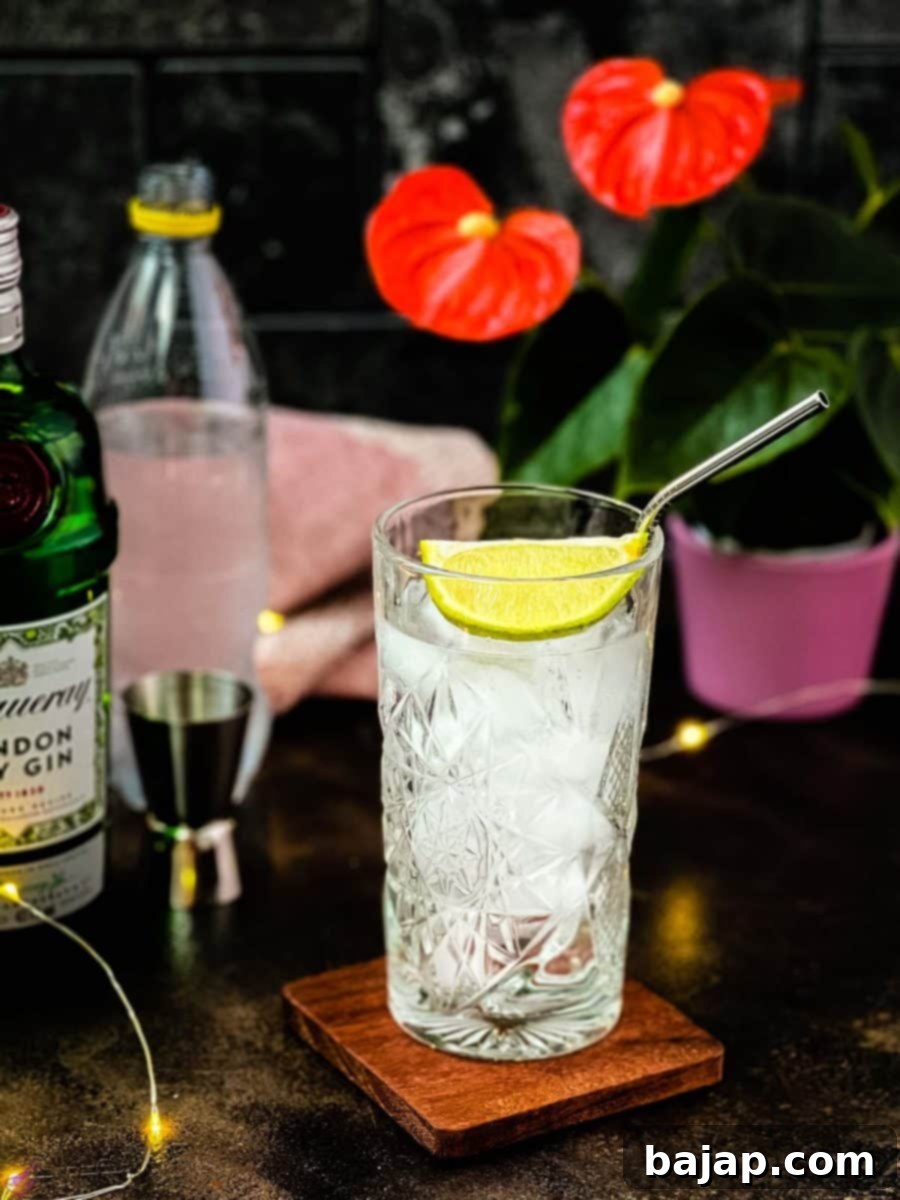
🎥 Video: How to Make a Tanqueray Gin and Tonic
🍽 Essential Equipment for Your Gin and Tonic
- Jigger: For accurate measurement of your gin.
- Highball glass: The ideal glass for a G&T, as discussed.
- Drinking straw (optional): Consider reusable options for environmental friendliness.
💭 Top Tip for a Perfect Gin and Tonic
When preparing your **gin and tonic** cocktails at home, a crucial detail often overlooked is how you handle your glassware. It’s essential that you hold your highball glasses from the bottom and avoid touching the rim or the main body of the glass. By doing this, you help maintain your chilled glass’s temperature, which in turn keeps your cocktail colder for longer and significantly enhances the taste!
And if you’re already wondering, “How do I chill a cocktail glass properly?” The most efficient way to get a perfectly chilled glass is to place them in the freezer beforehand. I usually like to give them at least a half hour to thoroughly chill, but if you’re like me and plan to host friends and family for backyard grilling and dinner parties this summer, you could even throw your glasses in the night before for ultimate preparation.
If you don’t have that kind of freezer space, or if time is short between refills for your guests, another effective method you could adopt is filling each cocktail glass completely with ice cubes. Let them sit for a minute or two to chill the glass. Once it’s time to build your drink, simply dump out the sacrificial ice and proceed with pouring your **gin and tonic**. This quick chill ensures your drink starts off perfectly cold.
In an attempt to protect our environment, one final tip is that I highly encourage you to avoid using disposable plastic straws whenever possible. If you can, opt to use either durable metal or biodegradable paper straws, or even better, forgo them altogether. Your delicious **gin and tonic** will taste just as good, and you’ll be doing your part for the planet.
🙋🏻 Gin and Tonic FAQ
Typically, the standard ratio for a balanced **gin and tonic** is 2 oz of **gin** to 4 oz of **tonic water**, creating a 1:2 ratio. However, this ratio can certainly be adjusted to your personal preference. Personally, I find this recipe creates a perfectly refreshing cocktail with just the right kick, but feel free to experiment with more gin or less tonic to discover what tastes best to you!
When compared to many other spirits, **gin** typically contains fewer sugars and often has fewer calories. It’s also worth remembering its origins are rooted in medicinal purposes, which some believe contributes to its ‘healthier’ perception, though moderation is always key with any alcoholic beverage.
For best results and to ensure proper mixing without disturbing the carbonation of the **tonic**, you should always pour your **gin** into the glass first, over ice, and then gently fill the rest of the glass with your **tonic water**.
One of the absolute best things you can mix with **gin** is, of course, **tonic water**! This iconic duo is wonderfully refreshing all on its own. Beyond the classic, popular and tasty combinations include cucumber **gin and tonic** often garnished with fresh cucumber slices, traditional **gin and tonic** with lime, and **gin and tonic** with lemon, typically served with a fragrant lemon peel to enhance the citrus notes.
OTHER RECIPES FOR YOU TO TRY
How to Make a Refreshing Strawberry Spritz Cocktail
Refreshing Lavender Daiquiri
How to Make a Snowball Cocktail
Homemade Vodka Sidecar
Lovely Lavender Spritz Cocktail
If you make this recipe, let me know how you liked it by ★★★★★ star rating it and leaving a comment below. This would be awesome! You can also sign up for our Newsletter or follow me on Pinterest or Instagram and share your creation with me. Just tag me @combinegoodflavors and hashtag #combinegoodflavors, so I don’t miss it.
📖 Recipe: Classic Tanqueray Gin and Tonic
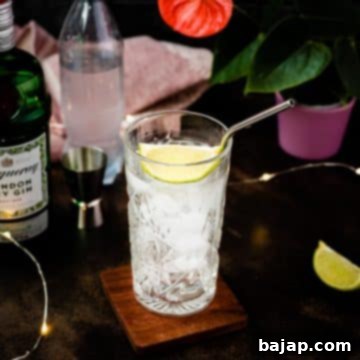
Tanqueray Gin and Tonic
Nora
Save RecipeSaved!
Pin Recipe
Equipment
-
Jigger
-
Highball Glass
Ingredients
- Cubed Ice
- 1 ½ oz Tanqueray Gin
- Tonic Water to fill up the glass (approx. 3-4 oz)
- Lime wedge or Lemon twist for garnish
Instructions
-
Start with a chilled highball glass and fill it generously with Cubed Ice to the brim.Cubed Ice
-
Next, add 1 ½ oz Tanqueray Gin over the ice.1 ½ oz Tanqueray Gin
-
Fill the remainder of the glass with Tonic Water (a typical highball glass holds 240ml (1 cup) to 350ml (1 ½ cups) in total).Tonic
-
Garnish with a fresh lime wedge or lemon twist. Serve immediately and enjoy!Lime and drinking straw
Notes
The glass should be filled to the rim with ice to best chill the drink and minimize dilution, ensuring a crisp taste.
In an attempt to protect our environment, we avoid using disposable straws whenever possible, opting for either metal or paper straws, or simply leaving them out if we can.
Garnishes should be placed near the top or next to the straw so that as much aromatic flavor as possible reaches you while drinking.
Nutrition values are estimates only, using online calculators. Please verify using your own data.

🤎 You might also like these refreshing cocktails
- How to Make a Frozen Strawberry Daiquiri
- How to Make a Refreshing Strawberry Spritz Cocktail
- Red Halloween Cocktail
- Homemade Vodka Sidecar
⛑️ Food Safety and Responsible Consumption
- Always consume alcoholic beverages responsibly and in moderation.
- Ensure all ingredients, especially fresh garnishes, are clean and washed.
- Do not leave prepared drinks sitting out at room temperature for extended periods, especially if they contain fresh fruit.
- If using homemade ingredients or infusions, ensure they are prepared and stored safely.
- Never consume alcohol if you are pregnant or underage.
- Do not drink and drive.
For further information on responsible alcohol consumption, consult local health guidelines. For general food safety, check Safe Food Handling – FDA.
